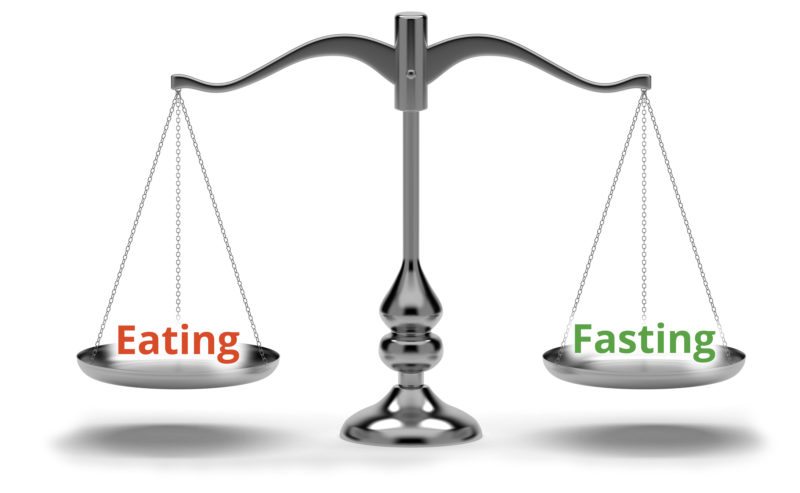Intermittent fasting part 1 | The 6 types of intermittent fasting
Whether they are looking for weight loss, shredding down, optimizing hormones for muscle growth or cleansing, more and more people have started practicing intermittent fasting. It might sound daunting for most people to go most of the day without food, but once you get into the groove of it, it is surprisingly easy to do. So what is exactly intermittent fasting?
What is IF?
We all fast, everyday, year round. Sometime during the evening or night we stop eating, we go to bed and sleep, and at some point the next day we eat breakfast, which, as the name suggests, is the breaking of our daily fast. So we are all familiar with the concept of going without food for a certain amount of time.
Intermittent fasting (IF) takes this period of not eating and extends it. Intermittent means “alternately beginning and ceasing again” and IF is often referred to as periodic fasting. How long the fast lasts defines the type of IF we are doing, and the period during which we eat is often called the eating window.
IF is not really a diet, it is more of an eating pattern. But some people do incorporate dieting in the sense that they eat at a caloric deficit. Mixing IF and eating less is very powerful for losing weight and is probably why many bodybuilders use this strategy to cut down before a show. The advantage of doing IF is that you get to eat a huge meal and satisfy your hunger once or twice a day, instead of eating several small meals and never really feel full.
6 types of intermittent fasting
There are many ways to do IF. In some of them you fast and eat in a daily pattern, while in others you only fast a few times weekly.
16/8
This is the most common and also the most gentle kind of IF. It was made popular by Martin Berkhan through his Leangains methodology, which also incorporates heavy weightlifting.
It involves 16 hours of fasting and an 8 hour eating window. When you do your 8 hours of eating is not important, you can start early in the morning or in the afternoon. Most people fit 3 meals into these 8 hours. And this kind of IF is usually done everyday as a constant eating regime.The 5:2 diet
In 2012 Michael Mosley and BBC made the documentary Eat, Fast and Live Longer. It is based on the research of Dr Krista Varady which found that eating normally every other day and fasting every other day led to weight loss and other health benefits.
Mosley thought that Varady’s program was too extreme for himself so he started practicing fasting 2 days a week instead, and the 5:2 diet was born.
So 5 days a week you eat normally, no restriction, and 2 days a week you only eat a small meal of 500 (women) or 600 (men) calories. And you should have at least one normal eating day between your two fasting days.Eat Stop Eat
Brad Pilon’s diet plan Eat Stop Eat was one of the first IF programs that was popularized.
In this plan you fast for 24 hours twice a week. I does not matter when you stop eating as long as you go 24 hours without food. So for example, if you stop eating at 7 o’clock today you will go without food until you break your fast at 7 o’clock tomorrow. Also, do not fast on consecutive days.The warrior diet
Ori Hofmekler’s book The Warrior Diet was published back in 2001 and has been a favorite among bodybuilders and survivalists alike. The basic way to practice it is to fast for 20 hours and eat in a 4 hour window. Ori does allow for small meals during the day (like a piece of fruit or a protein-rich snack), but he also says that the ultimate is to fast for 20 hours. During your 4 hour eating window he encourages people to eat the foods in a particular order, salad and vegetables first, then protein-rich foods, then carbs at the end.Alternate day fasting
This was made popular by Dr. Krista Varady in her book The Every-Other-Day Diet which is based on her extensive research. Her fasters eat normally one day and fast the next, eating only 500 calories (either as one meal or spread out).
There is also a version (not by Dr. Varady) where the fasting day is totally without calories. So basically fasting for 36 hours every other day. This is more extreme and should only be attempted with your doctor’s approval.OMAD
OMAD stands for one meal a day. This concept is newer than the others mentioned here, and has not been popularized yet. But there are several fasters that follow this plan and share their experiences on social media and blogs. Also Dr Eric Berg has done several videos on the subject.
The rules are to eat only one meal per day (no surprise there) and to varying degrees people restrict the size of that meal. Some keep the meal to a normal sized plate of foods, while others stuff themselves without restriction.
I want to add that many people get stuck on the idea that they need to choose one of these types and stick to it. One can easily jump from method to method to adjust to your everyday schedule (busy days, parties, vacations, etc.).
So why would you want to do intermittent fasting? I will look at that in part 2 where I will review the benefits of IF. So please click here to read part 2.

This post received a 0.420 SBD (10.08%) upvote from @upvotewhale thanks to @mariuse! For more information, check out my profile!